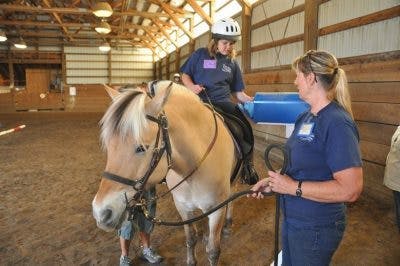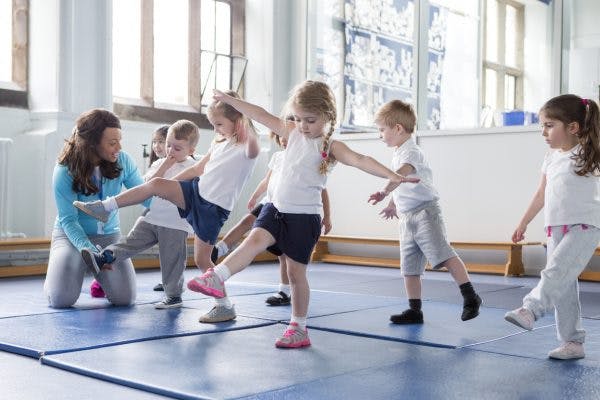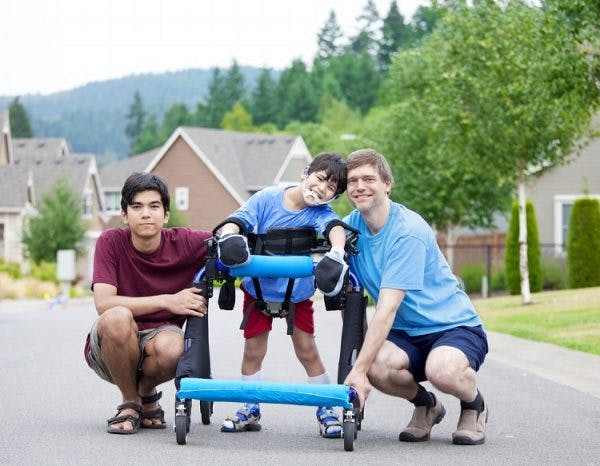In hippotherapy, children with cerebral palsy can work on developing their balance, posture, and gait while riding a horse. The horse’s movements help stimulate multiple sensorimotor skills, which can help improve overall mobility.
This article will help you understand what to expect at a hippotherapy session, its benefits, and why it works.
What to Expect At Hippotherapy for Cerebral Palsy
The purpose of hippotherapy is to develop skills on a horse that can translate over to improved mobility off the horse.
In order to provide hippotherapy services, a physical therapist, occupational therapist, or speech-language pathologist must be certified by the American Hippotherapy Association.
During hippotherapy, your child will be working with a certified therapist, a horse trainer, and instructors on both sides of the horse. This team will help support your child and make sure that he or she is safe throughout the entire process.
Additionally, the hippotherapy team will be controlling the movements and speed of the horse to help stimulate various motor and sensory skills in your child. They will also be giving your child feedback on how to respond to the horse’s movements to optimize your child’s progress.
Up next, we’ll go over the many benefits of hippotherapy for children with cerebral palsy.
Benefits of Hippotherapy for Cerebral Palsy

Cerebral palsy is a spectrum disorder, meaning that individuals can display a wide range of symptoms at varying severities.
Hippotherapy is appropriate for children as young as 2 years old and can provide physical, cognitive, and emotional benefits for all severities of cerebral palsy.
Suggested physical benefits of hippotherapy include improved:
- Balance
- Strength
- Coordination
- Muscle tone
- Range of movement
- Posture
- Gait
Suggested psychological benefits of hippotherapy include improved:
- Self-confidence
- Motivation
- Sensory processing
- Concentration
- Spatial awareness
- Feelings of emotional well-being due to increased release of endorphins
In the following section, we’ll discuss the mechanisms involved in hippotherapy that make it an effective form of treatment for individuals with cerebral palsy.
Why Hippotherapy Works

Cerebral palsy is a permanent condition; however, early intervention and participation in therapeutic interventions like hippotherapy can help slow the progression of symptoms and promote gradual improvements by stimulating neuroplasticity.
Neuroplasticity is the central nervous system’s ability to adapt and reorganize neural pathways. By consistently stimulating neuroplasticity through highly-repetitive, task-specific exercises, individuals can improve their motor functions.
Early intervention is crucial because children’s brains have greater levels of neuroplasticity than adult brains. As a result, children can learn new skills quicker and easier than adults. The sooner they address maladaptive habits, the easier they will be to replace.
Below, we’ll go over 3 key reasons why hippotherapy can be an effective form of treatment for individuals with cerebral palsy.
1. Increases Engagement
Repetitive stimulation is essential for improving motor skills in children with cerebral palsy.
However, children often get bored of repeating the same exercises in traditional physical therapy.
Interacting with a horse in hippotherapy helps keep children engaged. They have so much fun riding on the horse that they don’t realize how much they’re using their bodies to sit upright, stay balanced, and coordinate their movements. These skills translate to their abilities off of the horse as well.
2. Dynamic Movements of the Horse
Another fundamental element of hippotherapy is the dynamic movement of the horse.
Because the horse is continuously moving, children have to constantly adjust their center of gravity to stay balanced. Consistently engaging the core muscles can help improve trunk stability and posture.
Additionally, the horse’s movements provide a rhythmic and repetitive pattern that is similar to how humans walk. The dynamic movements of the horse transfer to the patient’s pelvis, which may help improve their gait.
Multiple body systems such as the sensory, musculoskeletal, limbic, and vestibular systems are used during hippotherapy. Repetitive stimulation of these systems can help promote neurological reorganization.
3. Body Temperature of the Horse
The body temperature of the horse also contributes to the therapeutic effects of hippotherapy.
A horse’s body temperature is about 1-5 degrees higher than that of humans. Warmer temperatures promote muscle relaxation, which can help reduce spasticity and pain and improve range of motion in individuals with cerebral palsy.
Hippotherapy for Cerebral Palsy: Key Points
Hippotherapy provides a unique, multi-sensory experience that helps keep children with cerebral palsy engaged and practicing the skills necessary to improve their mobility.
While hippotherapy is generally safe, it may not be ideal for children with severe epilepsy or those who are fearful, anxious, or allergic to horses. To make sure that hippotherapy is safe for your child, consult with their pediatrician.
Hopefully, this article helped you grasp what hippotherapy is and how it can help children with cerebral palsy improve their functional abilities.











